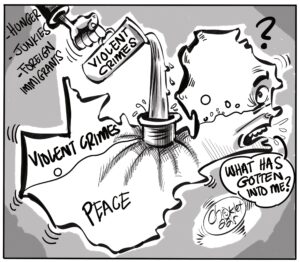The Grain Traders’ Association of Zambia (GTAZ) says Zambia is expected to record at least 2.6 million metric tonnes of maize this year despite the erratic rainfall experienced in some parts of the country.
And the Association urged government to lift trade barriers to allow exports of maize.
In an interview, Friday, GTAZ executive director Chambuleni Simwinga projected that at least 2.6 million tonnes of maize will be recorded, which would represent an 8.3 per cent increase from the 2.4 million tonnes harvested last year.
“When you look at the rain pattern, they’re not any different from the last season. So, in terms of maize grain production, we expect it to be around about 2.6 million tonnes because Northern, Muchinga and parts of Luapula, Copperbelt, North-Western (provinces); parts of Central Province and parts of Southern, they’re receiving good rainfall, so that will suffice to cover for those that have received inadequate rainfall. Our normal consumption, that is including industrial use, is less than 1.8 million tonnes. So, if we get 2.6 (million), then we have excess, just like this year, we had excess during the harvest,” Simwinga observed.
And Simwinga observed that the ongoing embargo on maize exports remained a challenge to grain traders who were seeking to export the commodity to regional markets.
“The only issue we have, even if we have excess then, there are barriers to trade. We can’t move maize, even as maize meal for exports, currently. There’s a restriction, and that will affect purchase from the grain traders in terms of there will be no capital because money will be tied in the stocks, so we’ll be discussing with the government trying to see how we can deal with the issue of relaxing the borders,” explained Simwinga.
“The usual policy shifts, today they say this, tomorrow it changes. There’s no ban, really, but restrictions are equal to a ban, because you can’t get a permit to export! So, meaning, you can’t even trade externally. So, we are stuck with stocks of maize as grain traders. This has been going on since the marketing season started. We have created our own barriers internally, which are not necessary; we should allow trade to flow. Controls can be there, but allow trade to flow.”
The Southern African Development Community (SADC) on Food Security Early Warning System for the 2018/2019 agricultural season reported extreme temperatures in the SADC region between October, 2018, and January, 2019, and has highlighted that as a major concern.
“Total rainfall from October, 2018, to early January, 2019, was well below average across most parts of the region. Most of Angola, western Zambia, Zimbabwe, northern Namibia, southern Mozambique, much of Botswana, eastern Tanzania, western Madagascar, Lesotho, and most of South Africa received less than 75 per cent of the rainfall typically expected during this period. At such a large time-scale, this is a significant departure from normal rainfall. The dry conditions were most severe from October to December in many areas. However, in late November through early December, some rains were received in the central and eastern parts of the region,” stated the SADC report.

























One Response
Another crook